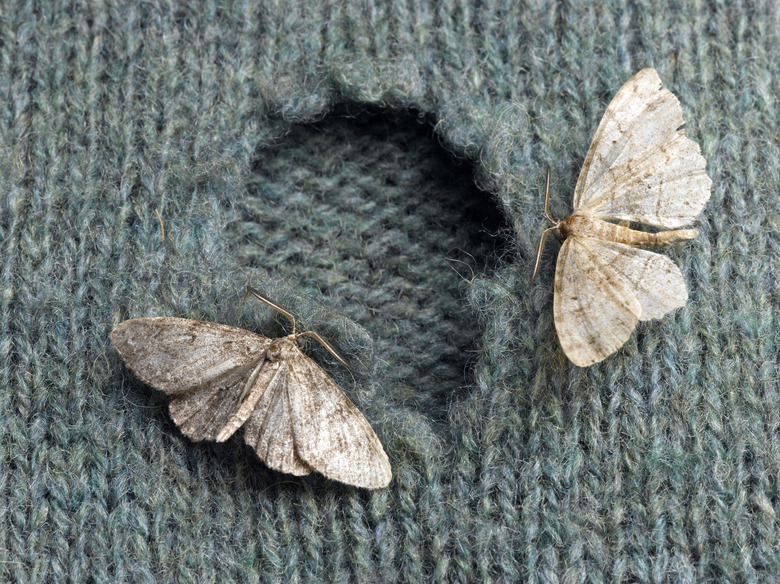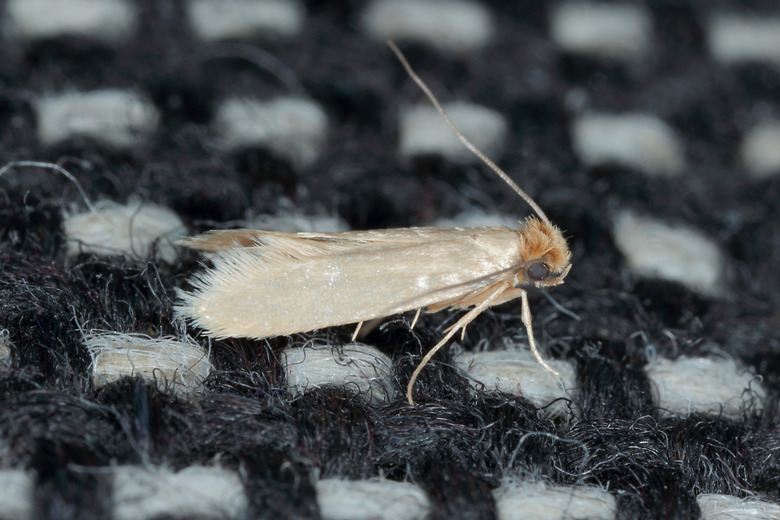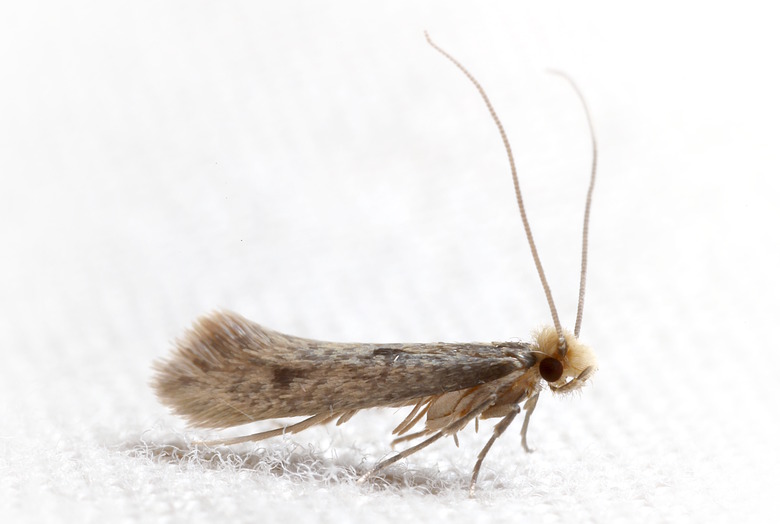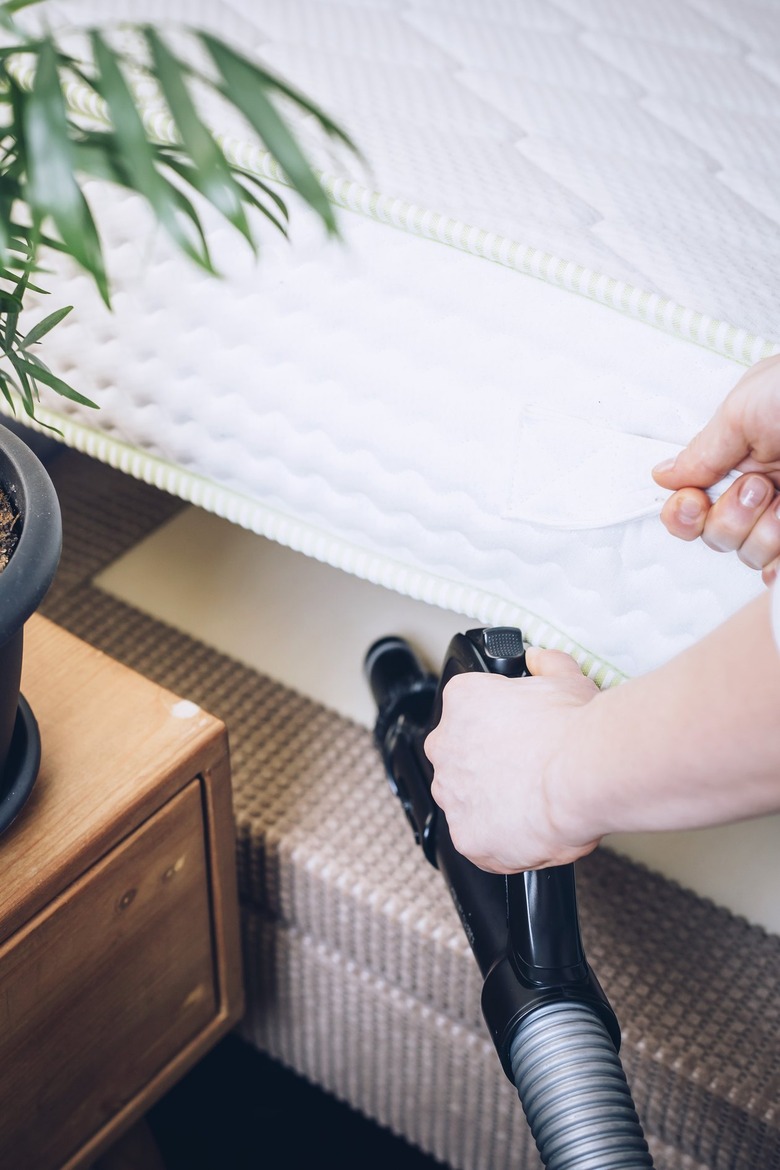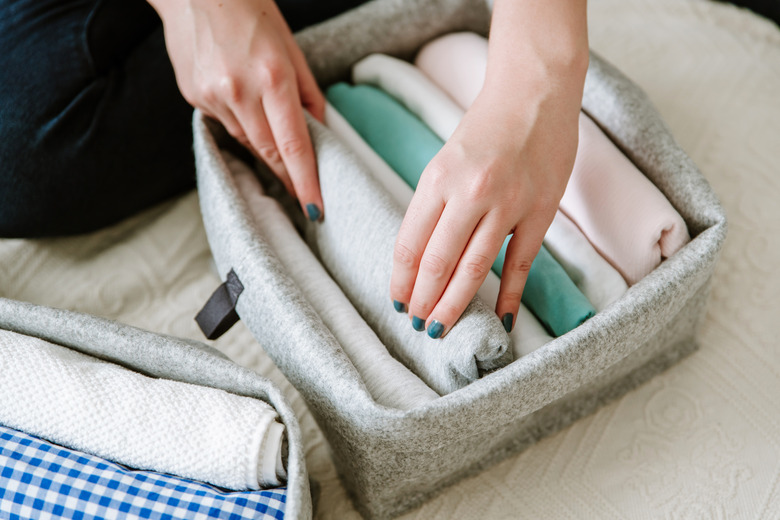How To Get Rid Of Clothes Moths
We may receive a commission on purchases made from links.
If you notice a small moth flying out of your closet, a tiny worm crawling around on your favorite cashmere sweater, or holes throughout your best wool jacket, then chances are you have a clothes moth problem. Clothes moths are small, 1/2-inch-long bugs with larvae that eat the keratin from natural fibers, such as wool, fur, silk, leather, and feathers. They may also eat holes in other fabrics, such as cotton or synthetic material, if these materials are blended with wool or are soiled with body oils or food stains.
The good news is that most people should be able to eliminate clothes moth infestations on their own by killing off the eggs and larvae. Once the infestation is handled, proper storage of susceptible items can minimize the risk of future infestations.
What Do Clothes Moths Look Like?
What Do Clothes Moths Look Like?
- Species names: Webbing clothes moth (Tineola bisselliella) and casemaking clothes moth (Tinea pellionella).
- Physical characteristics: Adults moths are usually beige, gray, or tan in
color. They are around 1/2 inch long with narrow wings and small hairs on the tips. - Wings or wingless? Wings
- Color/species varieties: The two most common clothes moths in the United States are the
webbing clothes moth and the casemaking clothes moth. Webbing clothes moths have tan wings and a tan head.
Casemaking clothes moths look largely the same only they have small, dark spots on
their wings. - Life cycle and appearance: Clothes moth larvae look like small worms, growing
no larger than 1/2 inch long. They are a creamy white color with a red head. They
may remain as caterpillars for anywhere between a month and two years depending on
their living conditions.
- How to tell apart from lookalikes: Clothes moths are often confused for
pantry moths that eat grains and similar foods, like cereals, nuts, and crackers. Clothes moths avoid light as much as possible, hiding in closets,
basements, wardrobes, and attics, while pantry moths are attracted to light, and
as the name implies, they are most commonly found in kitchens, cupboards, and food
storage areas. - Clothes moths vs. carpet beetles: Both clothes moths and carpet beetles hide
in dark, unused areas, like rarely used closets, and eat keratin from natural fibers. The best way to tell
these pests apart is to find one of the insects. Carpet beetle larvae are
typically between 1/8 and 1/4 inch long, are brown or black, and are covered in short
hairs. As adults, they are small, round beetles with reddish-brown, black,
or spotted brown shells.
How to Get Rid of Clothes Moths
Gather Up and Examine At-Risk Items
The first step to eliminating a clothes moth infestation is to identify all items that have already been infested and those at risk of infestation. If you find a scarf that has been chewed up like crazy in your attic, take some time to inspect all nearby fabrics for the insects. Check along seams, folds, pockets, and creases. Set aside any clothing you know has been infested as well as any clothing stored beside these items that are made from natural materials.
Don't overlook rugs or carpeting. On wall-to-wall carpeting, you may want to use needle-nose pliers to pull up carpet along the baseboards — because while larvae typically avoid living in well-trod carpets, they will gladly make a home in dark, unused corners. Clothes moth larvae may even hide in upholstered furniture or air vents that are filled with accumulated lint.
Wash or Dispose of Infested Items
Killing adult moths unfortunately will not stop an infestation. The best way to get rid of clothes moths is to kill the eggs and larvae by cleaning or disposing of each item that may potentially be infested. Washing clothes in hot water (above 120 degrees Fahrenheit) or dry cleaning clothes will kill eggs and larvae. For items that are too severely damaged by moths, disposing of the clothing may be the best option but be sure to dispose of them outside in a sealed plastic bag to prevent the infestation from spreading.
Start by sorting items into three piles stored within trash bags: one for items to be laundered in a standard washing machine, one for items to be dry cleaned, and one for items to be discarded. Wash infested clothes on hot with your usual laundry detergent. When bringing items to the dry cleaner, secure them in a sealed bag before bringing them in and be sure to notify your dry cleaner so it can prevent the moths from spreading into the clothes of other customers.
Turn to Cold Storage
It is possible to kill moths at every life stage by freezing them. This is sometimes the only option for items that cannot be put in a washing machine or dry cleaned, such as toys, taxidermied animals, shoes, and feather accessories. You can freeze these items in your home freezer, though you should purchase a refrigerator thermometer to ensure it reaches the necessary zero degrees Fahrenheit needed to kill the pests.
Before putting the items in your freezer, place your items in polyethylene storage bags and squeeze out all excess air before sealing the bag to protect your items from frost and condensation. Leave items in your freezer for at least 72 hours (but preferably a whole week) and then place the items in your refrigerator to allow them to slowly thaw. After the materials have defrosted, you can remove them from the bag or use these airtight containers to continue to store the items long term.
If your freezer does not get cold enough, you can look up a cold vault in your area and rent space for your items. If you have any particularly valuable items that are vulnerable to clothes moths, this can also be a good long-term storage option.
Natural Sunlight
Bright sunlight can kill moth eggs and larvae. You can try brushing the items with a fabric brush while outdoors to knock off eggs and larvae. Then, leave the items in the sun to leave any remaining larvae scurrying for cover from the bright light. Be very vigilant while brushing to get in all of the crevices, and take extra care to avoid tracking the pests back into your home.
High Heat Treatment
For items that can't be washed on high heat but can handle dry heat, like many wool items, you can use your oven to kill the pests as long as the item has no plastic on it. Set your oven at its lowest heat setting (though ensure it is at least 120 degrees) and then place the items on oven trays before putting them in the oven for half an hour.
Vacuum Flooring, Upholstery, and Air Vents
For carpeting, rugs, upholstery, and air vents, the best way to get rid of clothes moths is by thoroughly vacuuming the area to remove larvae and eggs. Be sure to use proper attachments for your vacuum cleaner in order to get along the edges of the carpets and under the baseboards, into upholstery crevices, and deep into your vents. Clean not just where you walk but also under furniture, in corners, in closets, and anywhere else that clothes moth larvae could be hiding. To avoid contaminating other areas, dump out your vacuum canister or throw away your vacuum bag in an outdoor trashcan. Repeat the process daily until you're certain the infestation is over.
You may also consider using a steam cleaner to deep clean and heat treat the material, killing any eggs and larvae the vacuum left behind.
Carpet and Rug Insecticides
To increase the effectiveness of vacuuming, you can also use pesticides marketed for use on fleas on your carpeting and rugs. Be sure to get the product in the cracks and crevices where moth larvae may hide. Avoid using these products on walls and shelves and never use insecticides on clothing or bedding. Remove all clothing, shoes, bedding, and other items before spraying pesticides. Only return these items to the room after you have cleaned them; otherwise, you may reinfest the area.
Pheromone Glue Traps
While not an effective way to eliminate an infestation, pheromone traps can be a useful part of an overall pest control strategy to monitor for clothes moths. If you have had an infestation, these traps can help you recognize if you've successfully eradicated the problem. They can also be useful for people who have a lot of vintage items and want to preemptively monitor for clothes moths.
These moth traps mimic the sex pheromone emitted by the female clothes moth, luring in the males, who get stuck on the sticky traps. Traps can be placed in closets, storage areas, chests, or any place where a moth infestation is a potential problem.
Commercial Moth Repellents
When most people learn they have a clothes moth infestation, they immediately think of purchasing mothballs made from paradichlorobenzene. While these products do effectively kill and repel moths, they are also highly toxic and should be handled with care. Mothball vapors are dangerous and should not be inhaled. Keep them away from children and pets at all times and always follow manufacturer instructions for use.
It's also important to know that these products need to be used at the proper concentration in order to be effective and must be stored in a sealed container with the clothing they are protecting. They should not, however, be in direct contact with fabric and should instead be placed on paper or in an old sock or nylon stocking. Mothball fumes are heavier than air, so the balls should be placed above fabric. It is also worth mentioning that these chemicals can damage plastic, so they should not be used in plastic containers, in containers with plastic hangers, or with items that have plastic buttons, belts, trim, beading, or other plastic detailing.
Always open containers that have been stored with mothballs outdoors. Allow clothing stored in these containers to air out for at least a day before wearing them and wash the items if possible.
How Clothes Moths Get In Your House
How Clothes Moths Get In Your House
The most common way clothes moths get into a home is by hitching a ride on second-hand clothing, rugs, or furniture. Adult moths can also fly into a home through an open window or cracks in the wall. While they can infest a home at any time of year, they are more active in spring and summer, when warmer temperatures cause eggs to hatch more quickly, and larvae go into the pupa stage quicker. Though adult moths may not eat your clothes (they eat nothing at all), they are still problematic because a single adult female can lay anywhere from 40 to 300 eggs, each around the size of a grain of sand.
How to Prevent Clothes Moths
How
to Prevent Clothes Moths
The best way to prevent clothes moths is to properly store your clothes. Only store clean items and always place them in airtight containers or in garment bags with mothballs. While sachets of moth-repelling herbs or cedarwood may work for a short period of time and will make your clothes smell good, these natural products simply do not provide long-lasting protection against clothes moths and will stop working as soon as the oils dry. Keep storage areas clean both before and during the storage period by vacuuming floors, shelves, walls, and nearby furniture. Place moth traps in the storage area to monitor for clothing moth infestations.
To protect your carpets, upholstery, and rugs, regularly vacuum the entire surface, including material in corners and crevices and under furniture. Also regularly vacuum any decorative tapestries or needlework displayed on your walls.
Leaving your closet open to air it out and get light into the space will discourage clothes moths, as will moving clothes around regularly. Always wash or vacuum vintage clothing, rugs, or furniture before bringing them home.
Do Clothes Moths Cause Damage?
Do Clothes Moths Cause Damage?
Clothes moths may not present any danger to you, your pets, or even your home structure, but they can destroy anything made from natural fibers one tiny little hole at a time. If caught early enough, the damage may be minor because the moths feed along the surface of the materials until the area becomes threadbare and develops a hole. Severely infested materials can actually start to dissolve, as the threadbare material becomes too thin to hold itself together.
If you spot small moths or creamy white worms in your closet, attic, basement, or other dark, rarely used area where natural fabrics are stored, do a thorough inspection of all fabrics in the area. Look for small worms, webbing that looks like dried mucus, small cocoons dangling from nearby shelving, and tiny, granular feces. You may also want to place some clothes moth traps in the area to help you monitor for adult moths.
References
- University of Kentucky: Clothes Moths
- New Mexico State University: Preventing Damage from Clothes Moths and Carpet Beetles
- Michigan State University: Clothes Moths (Tineola bisselliella & Tinea pellionella)
- New York Times Wirecutter: How to Get Rid of Clothes Moths
- Breda Pest Management: How Do Mothballs Work?
- Terminix: Where Do Clothes Moths Come From?
